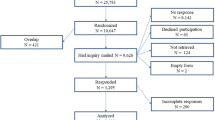Abstract
It has been argued that bioethicists too often tend to represent the interests of scientists and not of the broader polity. Indeed, bioethicists seem predisposed to discard the voices and viewpoints of all but the cognoscenti. Focusing particularly on human pluripotent stem cell research, this commentary explores a variety of characterizations of bioethics and bioethicists in relation to forbidding science. Rather than proselytizing or prohibiting, bioethicists should work in partnership with scientists and publics to craft scientifically well-informed and morally sophisticated debates about forbidding science.
Similar content being viewed by others
Notes
Bush’s position was something of a compromise; on moral (religious) grounds regarding the sanctity of life and worries about complicity, Bush opposed federal funding to create or to study newly created human embryonic stem cell lines, but he did not ban the research altogether. While non-federal funding sources were not constrained by his Executive Order, the intention was to limit federal involvement in human embryonic stem cell research. The standard political and bioethical response to Bush’s restriction was to promote a radically pro-research perspective, according to which limits on research should be rare or nonexistent. A minority of commentators (e.g., Baylis and Downie 2005; Baylis and Robert 2006) attempted to moderate extreme views by promoting well-justified human embryonic stem cell research, as against promoting all human embryonic stem cell research all the time, but on scientific and secular ethical grounds. For a sober and compelling assessment of the national context in the United States for debates about human pluripotent stem cell research, see Zwanziger (2008).
See also the introduction to a special issue of this journal on the ethics of communicating science (Garrett and Bird 2000).
For arguments about environmental ethics in situ that dovetail with mine about bioethics in situ, see Nelson (2008).
To the extent that the President’s Council on Bioethics, under Leon Kass, took the science seriously while simultaneously stimulating—or attempting to stimulate—a broad ethical conversation about moral values and human well-being, Kass should be considered a fledgling moral architect. We would all do well to learn from his efforts, even and perhaps especially where we disagree with his specific conclusions.
References
Bailey, R. (2005). Liberation biology: The scientific and moral case for the biotech revolution. Amherst, NY: Prometheus Books.
Baylis, F., & Downie, J. (2005). An embryonic debate. Literary Review of Canada, 13(2), 11–13.
Baylis, F., & McLeod, C. (2007). The stem cell debate continues: The buying and selling of eggs for research. Journal of Medical Ethics, 33(12), 726–731.
Baylis, F., & Robert, J. S. (2006). Human embryonic stem cell research: An argument for national research review. Accountability in Research, 13(3), 207–224.
Benatar, D. (2007). Unscientific ethics: Science and selective ethics. Hastings Center Report, 37(1), 30–32.
Brian, J. D., & Robert, J. S. (2008). Biotechnology, bioethics, and the future: A review of Ronald Bailey’s Liberation biology. Theoretical Medicine and Bioethics, 29(2), 125–128.
Cho, M. K., Tobin, S. L., Greely, H. T., McCormick, J., Boyce, A., & Magnus, D. (2008). Strangers at the benchside: Research ethics consultation. The American Journal of Bioethics, 8(3), 4–13.
de Melo-Martin, I., Palmer, L. I., & Fins, J. J. (2007). Developing a research ethics consultation service to foster responsive and responsible clinical research. Academic Medicine, 82(9), 900–904.
Garrett, J. M., & Bird, S. J. (2000). Editorial overview: Ethical issues in communicating science. Science and Engineering Ethics, 6(4), 435–442.
Giacomini, M., Baylis, F., & Robert, J. S. (2007). Banking on it: Public policy and the ethics of stem cell research and development. Social Science & Medicine, 65(7), 1490–1500.
Guston, D. H., & Sarewitz, D. (2002). Real-time technology assessment. Technology in Society, 24(1–2), 93–109.
Kalichman, M. (2006). Ethics and science: A 0.1% solution. Issues in Science and Technology, Fall, 34–36.
Kass, L. R. (2009). Forbidding science: Some beginning reflections. Science and Engineering Ethics (this issue).
Lo, B., Zettler, P., Cedars, M. I., Gates, E., Kriegstein, A. R., Oberman, M., et al. (2005). A new era in the ethics of human embryonic stem cell research. Stem Cells, 23(10), 1454–1459.
Müller, L. U., Daley, G. Q., & Williams, D. A. (2009). Upping the ante: Recent advances in direct reprogramming. Molecular Therapy. doi:10.1038/mt.2009.72.
Nelson, M. P. (2008). On doing helpful philosophy: Commentary on ‘Redefining ecological ethics: Science, policy, and philosophy at Cape Horn’. Science and Engineering Ethics, 14(4), 611–614.
Pilcher, H. (2006). Bioethics: Dial ‘e’ for ethics. Nature, 440(7088), 1104–1105.
Robert, J. S. (2006). The science and ethics of making part-human animals in stem cell biology. FASEB Journal, 20(7), 838–845.
Robert, J. S. (2007). Systems bioethics. The American Journal of Bioethics, 7(4), 80–82.
Robert, J. S. (2008). Nanoscience, nanoscientists, and controversy. In F. Allhoff & P. Lin (Eds.), Nanotechnology and society: Current and emerging ethical issues (pp. 225–239). New York: Springer.
Walker, M. U. (1993). Keeping moral space open. Hastings Center Report, 23(5), 33–40.
Winickoff, D. E. (2006). Governing stem cell research in California and the USA: Towards a social infrastructure. Trends in Biotechnology, 24(9), 390–394.
Zwanziger, L. L. (2008). Roots and branches of the U.S. national debate on human embryonic stem cell research. In K. R. Monroe, R. B. Miller, & J. Tobis (Eds.), Fundamentals of the stem cell debate: The scientific, religious, ethical & political issues (pp. 108–133). Los Angeles: University of California Press.
Acknowledgments
My research is supported by the Center for Biology and Society, the Institute for Humanities Research, and the Lincoln Center for Applied Ethics at Arizona State University, as well as by the James S. McDonnell Foundation. I am grateful to Jenny Dyck Brian and the editors for valuable feedback on drafts of this commentary.
Author information
Authors and Affiliations
Corresponding author
Rights and permissions
About this article
Cite this article
Robert, J.S. Toward a Better Bioethics. Sci Eng Ethics 15, 283–291 (2009). https://doi.org/10.1007/s11948-009-9134-5
Received:
Accepted:
Published:
Issue Date:
DOI: https://doi.org/10.1007/s11948-009-9134-5




